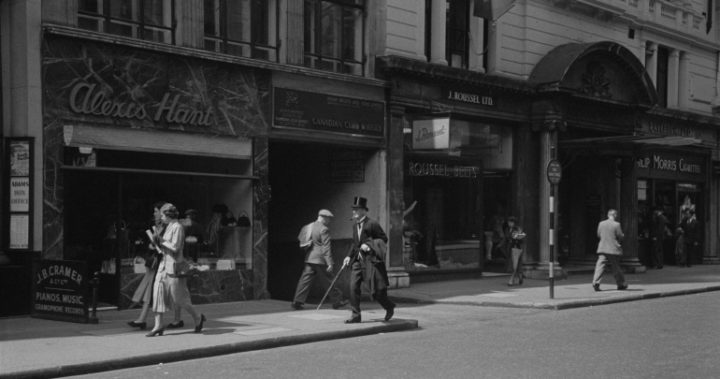Men’s fashion has barely changed in the last century

Men’s fashions don’t change a lot do they, except when some ‘clever’ designer gets the bright idea to use floral fabric in a suit, or try to get men to wear dresses! Look at old photographs from the start of the 20th century of a group of men and what do you see? Very little at first sight that is different from today, except I suppose, for the one major difference from today. In those old photos, pretty much every man is wearing a hat of some sort, from a flat cap to a top-hat.

You can almost tell what level of society each person comes from by looking at what hat they’re wearing. First there’s the working man, the miner or the factory employee – they’re the flat cap wearers. They often wore a long, white silk scarf as well, and their suits tended to need ironing.
Then there are some of the office workers – they seemed to favour straw boaters, as did the young men who were fortunate enough to be university students; very smart and slightly rakish. The Trilby hat wearers were also mainly office and shop workers, but were the more down-to-earth section of the community, they’d have thought the straw hat people a bit showy!
The next level of male society wore a bowler hat, with its domed top – they tended to be politicians, (back-benchers of course!), bookmakers and managers in business, smart, but understated. Finally were the men who had succeeded – they are the ones in the photograph who are wearing top hats, the definite badge of the upper crust, from political leaders like cabinet members and House of Lords material, right up to the ultimate – Royalty!
You really can’t judge men by this method today because very few men wear hats anyway, and the few that do all seem to wear baseball caps, whatever level of society they come from. I suppose the only hat that has thoroughly stood the test of time is the top hat – the upper crust conservatives still tend to cling to that badge of office, especially on special occasions, like Ascot or the opening of parliament (and the posher weddings too!).

Apart from the important party hats in those days, it’s usually pretty obvious that shirts, usually white (or originally white), looked much the same then as they do now, but with another point that I’ve suddenly noticed; the working class men wore a kerchief at their necks or just had open necked shirts, while the men placed higher in the social order wore ties, again split by class (very important in those days), into ordinary neckties or bow ties.

The suit was a garment worn by every class. More often than not, single breasted and including a waist-coat; I don’t think suits without waist-coats had yet been invented, judging by the photos I’ve seen. Yet, the styles were hardly different from any suit you can buy today. Perhaps an important difference is in the material they were made of. In those days most suits were made of wool, a heavy material, which shrank if washed and always seems, when you see these old pictures, to have been baggy, fairly ill-fitting and to have been nowhere near a hot-iron. We don’t realise just how well off we are today, with our wash-and-wear suits that can be chucked in the washing machine, hung out to dry and be put back on again without any need for ironing. The synthetic fibres of today also give us much lighter weight material and an infinitely broader choice of colours and designs.
The last thing you’ll notice when looking at that old photograph is the footwear. Again social differences were evident at the beginning of the 20th century, with the working-class man wearing boots, the office worker in leather shoes and the upper class gent in patent-leather. Today you’re more likely to see men and boys in trainers as they’re called, acceptable footwear for nearly all occasions these days and a lot more comfortable to wear as well, I’m sure!
Of course, then to now, we all like to wear special garments, for whatever activity we are indulging in. But still, men’s fashions haven’t actually changed much, especially when compared to the ladies, who seem to want a new design for each day of the week. Men wear their stuff until it’s really worn out – you only have to look in the men’s section of any op shops to see that!








 Proudly Australian owned and operated
Proudly Australian owned and operated